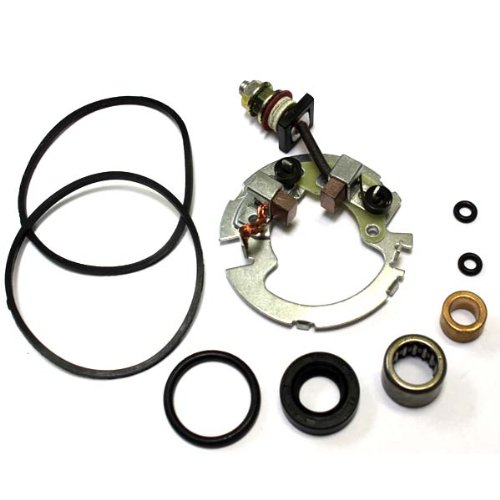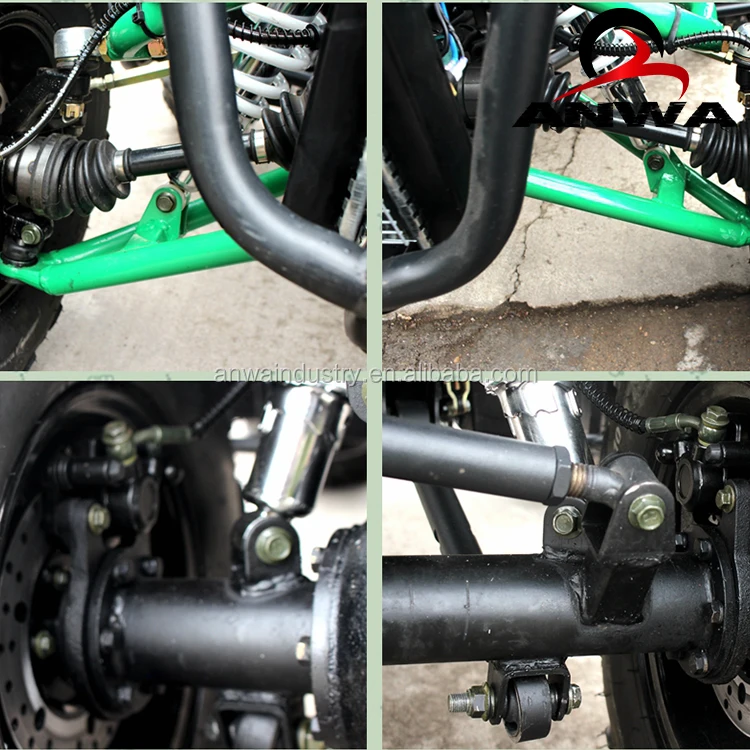Helpful tips
by Ayden Rudd
How do I Adjust a Carb on a Honda 300EX ATV?
Why does my Honda FourTrax 300 backfire?
Backfiring occurs when one (or more) spark plug in the ATV engine ignites the fuel when it’s out of turn in the chamber, and the exhaust valve on the cylinder is open. In other words, ATV backfiring occurs due to a short, sudden instance when the engine is too lean or too rich.
Why is my Honda 300 FourTrax smoking?
Smoke can be an indication of bad cylinders, seals, gaskets or something similar, usually accompanied by gasoline or oil burning in the engine. Fortunately, the color and timing of the smoke coming out of your quad will help narrow down the problem so that you can find a solution and get back to the trail.
the screw goes inside the housing and theres a little grey plastic piece that the throttle cable connects to to open the throttle.
Why is my ATV backfiring through carb?
If your ATV is backfiring, you should check a few of the common reasons: The fuel to air mixture is too lean or rich. There is an issue with the carburetor. The fuel pump could be supplying weak or low pressure.
Why is my ATV running rich?
Your engine needs fresh gas, and this may seem too obvious, but stale gas causes a lot of problems. Restricted airflow is also a very common cause of a rich running ATV engine. A dirty, contaminated air filter, kinked or blocked snorkel, or intake ducting will prevent proper airflow.
There are a few reasons a 2 stroke can smoke more than normal: The fuel mixture is too rich. The oil/fuel mixture is too heavy on oil. The power valve (if you have one) is dirty.
The oil/fuel mixture is too heavy on oil. The power valve (if you have one) is dirty.
What causes white smoke from exhaust?
White smoke from the exhaust: This could be steam caused by condensation in the exhaust pipe or a more serious issue caused by an engine coolant leak. Excessive amounts of white smoke could indicate head gasket failure.
How do you clean a ATV carburetor without removing it?
To clean a motorcycle carburetor without removing it, you’ll need to remove the bowls at the bottom of the carburetor. Once the bowls are removed, spray some carburetor cleaner up inside, wait a few minutes, then spray again to ensure coverage. Then replace the bowls and start the motorcycle to assess how it runs.
JavaScript is disabled. For a better experience, please enable JavaScript in your browser before proceeding.
For a better experience, please enable JavaScript in your browser before proceeding.
1 - 20 of 20 Posts
1 - 20 of 20 Posts
 Please consider creating a new thread.
Please consider creating a new thread.Top
In order for the ATV to work like a clock, the rider needs to regularly carry out a complete maintenance of the equipment. And a key element of maintenance is ATV carburetor adjustment. Over time, the system starts to work incorrectly, which increases fuel consumption, worsens dynamics and other problems appear. So how do you adjust an ATV carburetor?
The operation and life of the engine directly depends on the quality of the fuel mixture. The carburetor is responsible for the preparation of the composition, but after prolonged use of the equipment, the settings “go astray”. This results in:

Many riders who decide to buy an inexpensive ATV simply do not spare the technique and ignore this procedure. But even if you plan to change your device in 1.5-2 years, adjustment is needed. The reason for this is increased fuel consumption. A quad with an untuned carburetor "eats" 30-40% more gasoline, and these are tangible costs.
A quad with an untuned carburetor "eats" 30-40% more gasoline, and these are tangible costs.
So how do you adjust the carburetor on a Chinese ATV? For this you need:
However, it is important to remember that all adjustments are made only with a "clean" carburettor. This means that the rider needs to remove all the dirt from the node and flush the system to remove condensation and sediment from it.
Note: Just before adjusting, the engine must be warmed up to operating temperature.
To set the carburetor idle speed, the float chamber must first be cleared of fuel. To do this, start the ATV, close the fuel cock and wait until the machine stalls (5-10 minutes). To speed up the process, you can take a little ride on the quadric. Of course, gasoline can be drained, but in any case you will have to warm up the device, so the first method of "removing" gasoline is more effective.
To speed up the process, you can take a little ride on the quadric. Of course, gasoline can be drained, but in any case you will have to warm up the device, so the first method of "removing" gasoline is more effective.
Then:

Read the manual before adjusting the carburetor on a 125cc ATV to be sure. Remember that the location of the bolts is different in different devices, so read the documentation in advance.
To evaluate the quality of the fuel composition, make a test run. After that, unscrew the candle, and evaluate its condition. If it is:
 This means that there is a high concentration of metals in the composition.
This means that there is a high concentration of metals in the composition.
Also look out for these “symptoms”: damaged tip (electrode failure), oil deposits (damage to rings and caps), chips and inclusions (sign of motor failure).
To adjust the mixture you need to twist the needle cover and pull it out. To get the needle, pull out the cable. After that, move the ring in the required direction (lower - more air, but less fuel and vice versa). Then start the engine and make sure it doesn't stall.
The last step in adjusting the 125cc ATV carburetor is adjusting the petrol level. To do this, you need:

Note: Adjust as carefully as possible as system components are very fragile. Ideally, carburetor tuning should be done by a specialist.
06/16/2020 21160
It often seems like an insurmountable task for beginners to tune and adjust the carburetor of an ATV, but in fact, it is far from being the case. Using our instructions, you can easily set up a carburetor with your own hands.
Due to improper carburetor settings, problems such as: failures during acceleration, jerks while driving, uncertain start of the engine, poor acceleration dynamics, overheating, loss of power, increased fuel consumption, formation of deposits in the combustion chamber.
So what exactly are we going to tune?
Attention! The adjustment is carried out under the condition of a warm engine and a clean carburetor.
First, make sure there is no condensation in the carburetor. First, you need to drain the gasoline from the float chamber, for this you need to close the fuel cock and partially unscrew the screw No. 1, after the gasoline has drained from the float chamber, tighten the screw No. 1.
Let's look at photos of candles with various deposits and defects.
A 100% indicator of a correctly adjusted combustible mixture is carbon deposits on a candle.
Consider the location of the screws for adjusting the quality of the mixture and idle speed of carburetors of different models.
#1 Float chamber plug; No. 2 Mixture quality screw;
#3 Idle adjustment screw.
1 - quality adjustment screw at idle; 2 - fuel inlet fitting; 3 - fitting through which you can sleep fuel from the float chamber; 4 - screw-plug of the float chamber.
1 - ventilation tube; 2 - idle speed adjustment screw; 3 - screw for adjusting the composition of the air-fuel mixture.
ATV carburetor speed and mixture adjustment.
1. Start and warm up the engine until it reaches operating temperature.
2. Adjust the idle screw to set the idle speed to normal. Completely, until it stops, tighten the fuel mixture screw, the engine should stall. If this does not happen, check the tightness of the air supply system from the air filter.
3. Loosen the fuel mixture screw 1 turn. (Turning the screw clockwise, we enrich the mixture, unscrewing it counterclockwise, we lean).
4. Start the engine and, by adjusting the idle screw, set the speed slightly higher than usual
5. Slowly unscrew the fuel mixture screw until the engine reaches maximum speed (we unscrew the screw no more than 2 turns, but depending range may fluctuate due to engine wear and other faults).
Slowly unscrew the fuel mixture screw until the engine reaches maximum speed (we unscrew the screw no more than 2 turns, but depending range may fluctuate due to engine wear and other faults).
6. Re-adjust the idle screw to set the idle speed to normal.
7. Press the throttle trigger several times, check if the idle speed is stable.
Mixture quality adjustment with a needle.
Probably you have heard more than once about adjusting the quality of the mixture on the carburetor by manipulating the needle. I note that these are extreme measures, for the initial adjustment, use the mixture quality screw, and only if you do not get the desired result, unscrew the mount and remove the needle. What does she represent? This is the main element that regulates the amount of gasoline supplied to the combustion chamber. Connected directly to the throttle handle through a cable. When you turn the knob, the needle rises higher, opening up a channel for fuel, thereby delivering more mixture, which increases power, which translates into speed.
You will see 5 grooves on the needle at the attachment point. Initially, the retaining ring fixes it in the central position, this is the best option. But sometimes it is not possible to achieve the required quality of the mixture. Then we will need the remaining grooves, 2 on top and 2 on the bottom, this suggests that we can adjust the dose gradually.
Lifting the retaining ring up and locking it in this position lowers the needle, which, in turn, blocks the channel more than usual. Gasoline enters less than air, and the mixture becomes leaner. Lowering the ring down, we raise the needle, and everything happens exactly the opposite.
Be aware that an excessively lean or rich mixture can lead to serious problems ranging from overheating to loss of power, carbon deposits in the combustion chamber and all the ensuing consequences. Keep an eye on the condition of the spark plug electrodes, this is the main indicator that will help you determine the quality of the mixture.